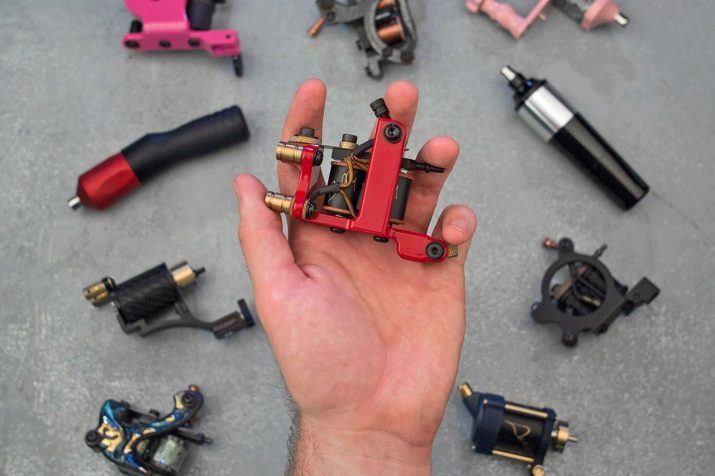All about rotary tattoo machines
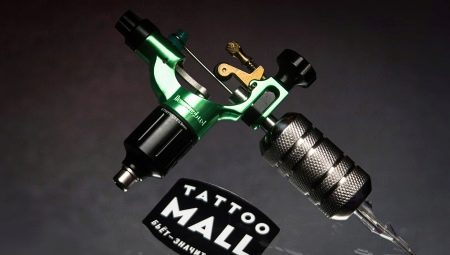
Rotary and induction tattoo machines are the only ones that are considered the cheapest today. There is, however, the possibility of applying a tattoo using a laser, but this method is not particularly popular among young people due to its high cost. The article will focus on rotary tattoo machines.
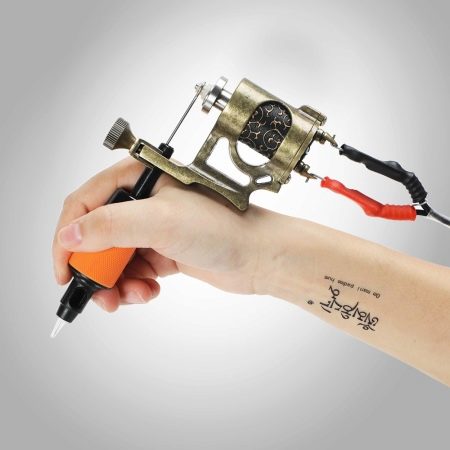
What it is?
A rotary machine works on the basis of a rotor - a moving component of an electric motor. The principle of operation of a rotary machine is similar to a piston pump. Instead of a piston, a rod with a needle or a piece of guitar string is installed on such a machine, which has no less elasticity than a sewing needle. Rotating, the motor drives the connecting rod mechanism, which consists of a rod and a crank wheel. The wheel itself - its function with no less success is performed by a converted gear wheel from some mechanism containing gear wheels for transmitting movement - it has been redone in such a way that the ledge located on one of its sides drags the end of the bar with the needle (or strings). The movements of the needle back and forth are performed with the same amplitude in time.
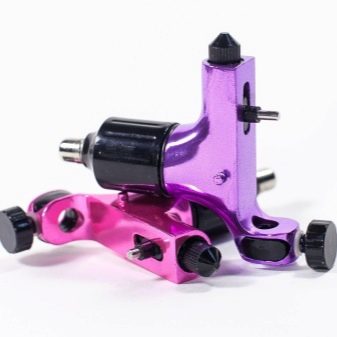
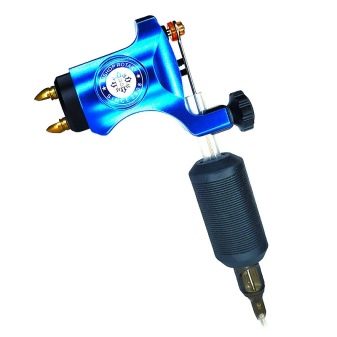
Comparison with induction machines
In induction machines, the motor rotor is replaced by coils with cores that alternately attract the sides of the armature with the striker. Such a machine, in contrast to the collector-motor, works not from direct current, but from alternating current, which will require another adapter from it, which leaves the current alternating, and does not convert it to direct. The rotary machine has lower vibration, which allows the master to work more accurately, moreover, the speed of knocking out the pattern can be adjusted by changing the supply voltage. Thanks to this feature, the work becomes more "jewelry", which ultimately provides a better quality of work.

A machine with a rotor is lighter than an induction machine - the master saves energy, which allows him to cope with large patterns with many transitions and halftones.
The rotary machine is mainly used for works of a highly artistic nature. It allows you to distribute dyes of different colors. Brightness characteristics are fully developed here. While in the down position, the needle slowly returns to the up position. Clarity is more difficult to maintain here than when working with an induction machine. Customers who do not need a too sharp outline will appreciate the work of a rotary clipper.

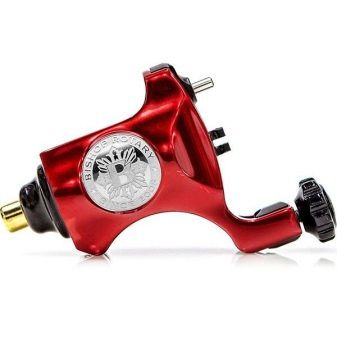
However, a rotary machine has an unpleasant feature in its work - the complexity of processing places on the body where fat deposits are present, which cannot be said about induction work.
The needle of the rotary machine penetrates to a shallower depth, the skin is less damaged. But with such a machine, you need to run it over the skin several times in order to get an acceptable result, therefore, it will take more time for the session. Usually, the foreman has both types of cars with him - this approach allows him to better adapt to the client's needs. At certain stages of tattooing, each of them is performed for the sake of the highest level of quality. To argue that either type is worse is fundamentally wrong.

What are they?
The simplest rotor is produced as a non-separable product. It communicates with the motor shaft through the simplest crank mechanism, while the needle is simply stuck into the holder, and modular, that is, with a completely collapsible mechanism, in which a clamping micro-chuck is provided.
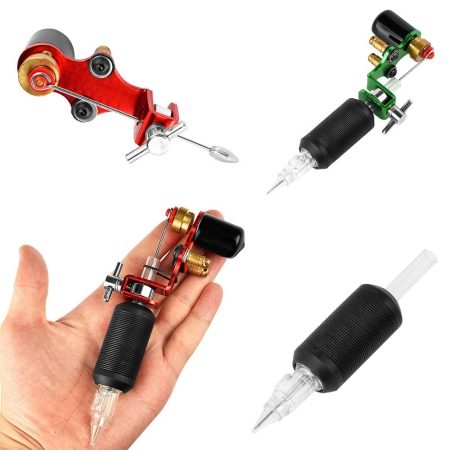
The most popular type of typewriter is the pen, or "pen". This design directs the needle directly to the point of work. Needle "wobbling" is eliminated due to the fact that the "handle" resembling the body of a plastic handle guides the needle in the center. The diameter of the needle exit hole is slightly larger than its point, and the slightest deviation of the needle to the side is excluded. This design is popular with DIYers who assemble cars on their own. Novice masters master the art of tattooing from the rotary mechanisms.


The hybrid machine combines rotary and induction types. From the second in this list, this type was taken by the striker - but the difference is that this element is controlled not by the magnetic field of the coils, but by the motor transmission. The stability and accuracy are at the highest level. The disadvantage is the relative high cost: such a machine is more expensive than purely rotary and induction models.

Review of the best manufacturers
Basically, the market for tattoo machines has been confidently held over the past few years. brands Skinductor, Vlad Blad, Mustang Tattoo, WTE, Hummingbird and several others. Most of the machines are made in China, not in the home country of a particular brand. The top models for today are held by the following of them.
Tattoo machine P10 MAST WQ 367. Created for tattooing and permanent. It has average weight characteristics, but is easy to use.

P4 Mini - weighs less than the previous one: only 85 g. The fatigue of the master is reduced, you can work for a rather long time. Suitable for microscopic coloring - for example, allows you to make an eyebrow liner.
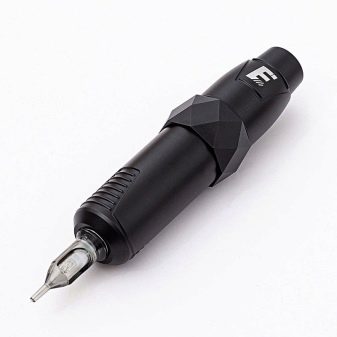
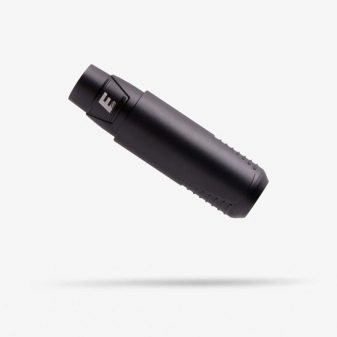
MAST TOUR WQ366 - the smallest product. Suitable for any tattoo work.
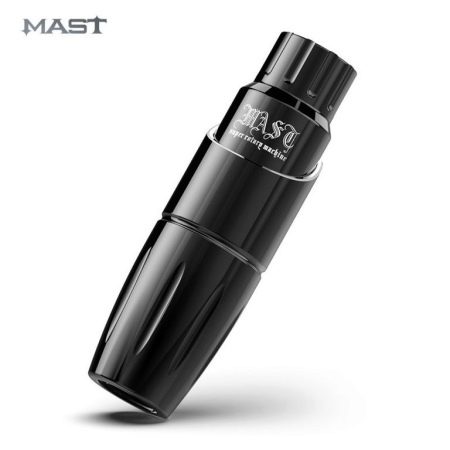
Selection Tips
Give preference to the most "promoted" brands. Then read the parameters - they are important for productive and operational work. Pay attention also to the ergo design of the frame and removable components - the machine should be comfortable to use, it depends on how quickly the master will cope with the work without taking additional breaks.
You need to choose a product that must be compatible with replaceable components, right down to the needles. A device with too little functionality, on the purchase of which they tried to save money, will not allow the full potential of replaceable cartridges to be revealed, as well as spare parts that do not meet the declared functionality of the device.
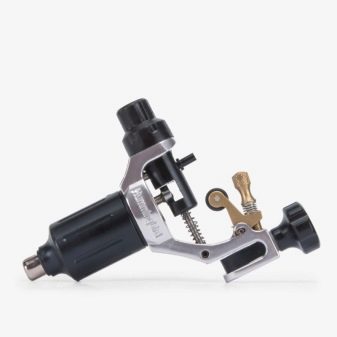
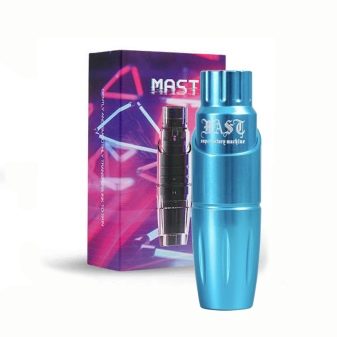
Customization
Before using the device, its operation must be configured.
-
Prepare the power supply. One of the cables connects to the pedal, the other to the unit.
-
Connect the holder, sheath and nose together. They are tightened with a hex wrench.
-
To do this, insert the attached needle holder into the required hole. Fix it with the hex bolt. At the same time, check how far the needle protrudes during operation. The maximum distance to which it should extend beyond the bow does not exceed 1 mm.
-
Place the eye of the needle in the rubber seal, and insert it into the protruding part. Wrap the junction with an elastic band - such a "bandage", in turn, grabs the bundles of banknotes. This elastic will prevent the needle from vibrating.
-
Connect the clipper to the power supply.
-
Set the speed with the regulator (or switch) on the power supply.
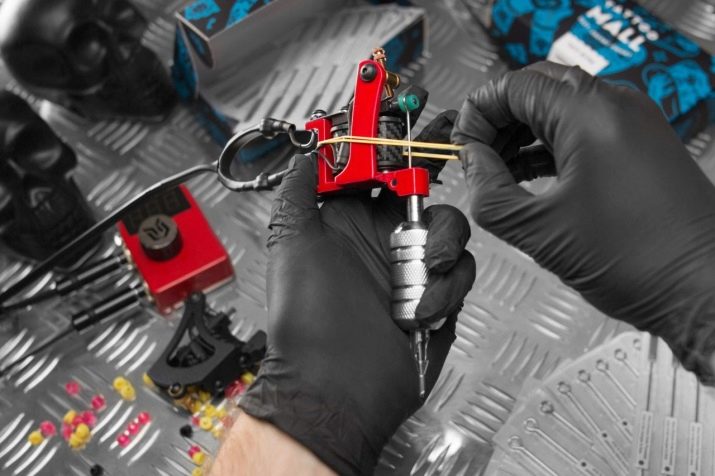
The needle firing frequency is 50-1000 pokes per minute.
Care rules
Reusable device and replaceable components are sterilized in alcohol and heated. The fact is that clients with HIV in their bodies can transmit it to healthy users through non-sterilized needles.
It is unacceptable to use the device in a dirty state. Cleanliness and neatness are the trademark of the master.
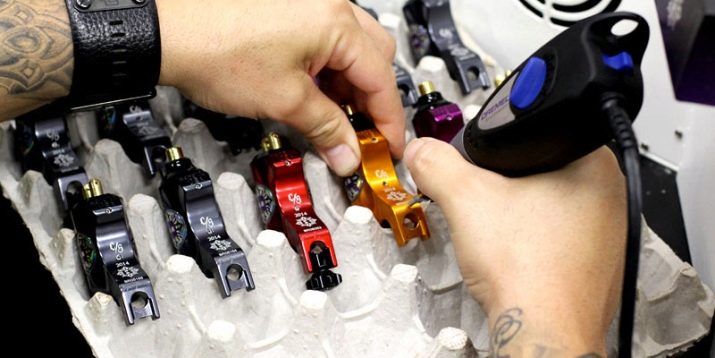
With a total duration of sessions of 20 hours, a few drops of industrial or gun oil are added to the rubbing mechanisms. Such a lubricant will extend the service life of the mechanics for many years.
The assembly of the sterilized apparatus - or rather, its preparation for work - is carried out with gloves and a mask. Tools must be thoroughly cleaned with alcohol.
If the breakdown is difficult to fix on your own, then it is better to take the device to a workshop. This should be done when, for example, extraneous sounds are heard in the operation of the device.
